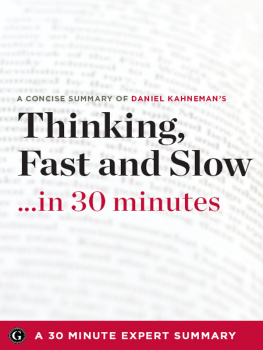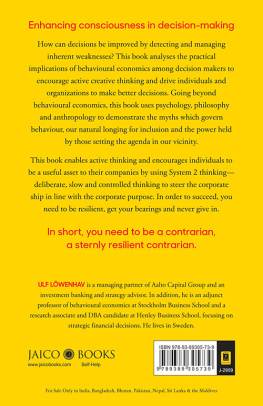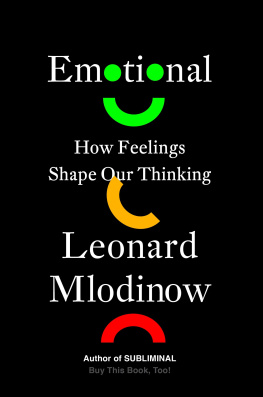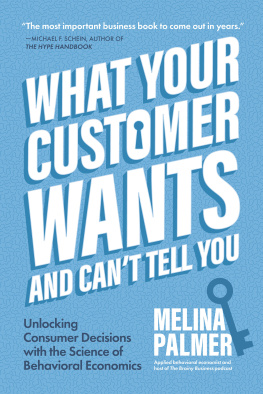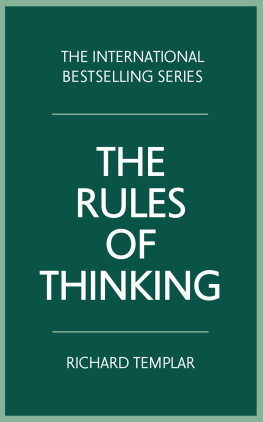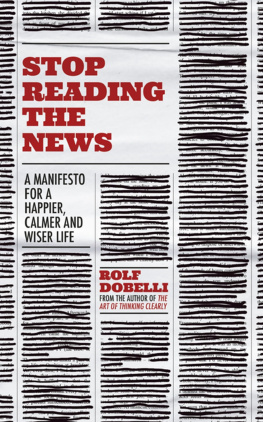Conger Eric - The Art of Thinking Clearly
Here you can read online Conger Eric - The Art of Thinking Clearly full text of the book (entire story) in english for free. Download pdf and epub, get meaning, cover and reviews about this ebook. City: New York, year: 2013, publisher: Harper Audio, genre: Religion. Description of the work, (preface) as well as reviews are available. Best literature library LitArk.com created for fans of good reading and offers a wide selection of genres:
Romance novel
Science fiction
Adventure
Detective
Science
History
Home and family
Prose
Art
Politics
Computer
Non-fiction
Religion
Business
Children
Humor
Choose a favorite category and find really read worthwhile books. Enjoy immersion in the world of imagination, feel the emotions of the characters or learn something new for yourself, make an fascinating discovery.

- Book:The Art of Thinking Clearly
- Author:
- Publisher:Harper Audio
- Genre:
- Year:2013
- City:New York
- Rating:5 / 5
- Favourites:Add to favourites
- Your mark:
- 100
- 1
- 2
- 3
- 4
- 5
The Art of Thinking Clearly: summary, description and annotation
We offer to read an annotation, description, summary or preface (depends on what the author of the book "The Art of Thinking Clearly" wrote himself). If you haven't found the necessary information about the book — write in the comments, we will try to find it.
The Art of Thinking Clearly — read online for free the complete book (whole text) full work
Below is the text of the book, divided by pages. System saving the place of the last page read, allows you to conveniently read the book "The Art of Thinking Clearly" online for free, without having to search again every time where you left off. Put a bookmark, and you can go to the page where you finished reading at any time.
Font size:
Interval:
Bookmark:
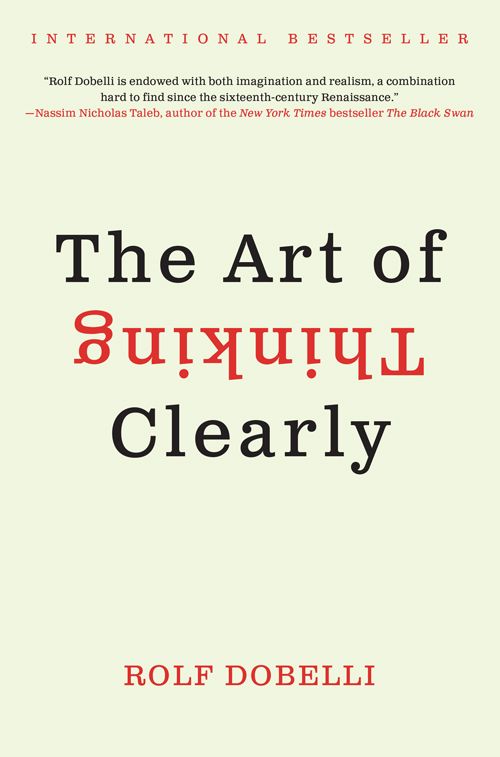
For Sabine
Contents
I n the fall of 2004, a European media mogul invited me to Munich to partake in what was described as an informal exchange of intellectuals. I had never considered myself an intellectualI had studied business, which made me quite the opposite, reallybut I had also written two literary novels and that, I guessed, must have qualified me for such an invitation.
Nassim Nicholas Taleb was sitting at the table. At that time, he was an obscure Wall Street trader with a penchant for philosophy. I was introduced to him as an authority on the English and Scottish Enlightenment, particularly the philosophy of David Hume. Obviously I had been mixed up with someone else. Stunned, I nevertheless flashed a hesitant smile around the room and let the resulting silence act as proof of my philosophical prowess. Right away, Taleb pulled over a free chair and patted the seat. I sat down. After a cursory exchange about Hume, the conversation mercifully shifted to Wall Street. We marveled at the systematic errors in decision making CEOs and business leaders makeourselves included. We chatted about the fact that unexpected events seem much more likely in retrospect. We chuckled about why it is that investors cannot part with their shares when they drop below acquisition price.
Following the event, Taleb sent me pages from his manuscript, a gem of a book, which I commented on and partly criticized. These went on to form part of his international best seller, The Black Swan . The book catapulted Taleb into the intellectual all-star league. Meanwhile, my appetite whetted, I began to devour books and articles written by cognitive and social scientists on topics such as heuristics and biases, and I also increased my e-mail conversations with a large number researchers and started to visit their labs. By 2009, I realized that, alongside my job as a novelist, I had become a student of social and cognitive psychology.
The failure to think clearly, or what experts call a cognitive error, is a systematic deviation from logicfrom optimal, rational, reasonable thought and behavior. By systematic, I mean that these are not just occasional errors in judgment but rather routine mistakes, barriers to logic we stumble over time and again, repeating patterns through generations and through the centuries. For example, it is much more common that we overestimate our knowledge than we underestimate it. Similarly, the danger of losing something stimulates us much more than the prospect of making a similar gain. In the presence of other people we tend to adjust our behavior to theirs, not the opposite. Anecdotes make us overlook the statistical distribution (base rate) behind it, not the other way round. The errors we make follow the same pattern over and over again, piling up in one specific, predictable corner like dirty laundry, while the other corner remains relatively clean (i.e., they pile up in the overconfidence corner, not the underconfidence corner).
To avoid frivolous gambles with the wealth I had accumulated over the course of my literary career, I began to put together a list of these systematic cognitive errors, complete with notes and personal anecdoteswith no intention of ever publishing them. The list was originally designed to be used by me alone. Some of these thinking errors have been known for centuries; others have been discovered in the last few years. Some come with two or three names attached to them. I chose the terms most widely used. Soon I realized that such a compilation of pitfalls was not only useful for making investing decisions but also for business and personal matters. Once I had prepared the list, I felt calmer and more levelheaded. I began to recognize my own errors sooner and was able to change course before any lasting damage was done. And, for the first time in my life, I was able to recognize when others might be in the thrall of these very same systematic errors. Armed with my list, I could now resist their pulland perhaps even gain an upper hand in my dealings. I now had categories, terms, and explanations with which to ward off the specter of irrationality. Since Benjamin Franklins kite-flying days, thunder and lightning have not grown less frequent, powerful, or loudbut they have become less worrisome. This is exactly how I feel about my own irrationality now.
Friends soon learned of my compendium and showed interest. This led to a weekly newspaper column in Germany, Holland, and Switzerland, countless presentations (mostly to medical doctors, investors, board members, CEOs, and government officials), and eventually to this book.
Please keep in mind three things as you peruse these pages: First, the list of fallacies in this book is not complete. Undoubtedly new ones will be discovered. Second, the majority of these errors are related to one another. This should come as no surprise. After all, all brain regions are linked. Neural projections travel from region to region in the brain; no area functions independently. Third, I am primarily a novelist and an entrepreneur, not a social scientist; I dont have my own lab where I can conduct experiments on cognitive errors, nor do I have a staff of researchers I can dispatch to scout for behavioral errors. In writing this book, I think of myself as a translator whose job is to interpret and synthesize what Ive read and learnedto put it in terms others can understand. My great respect goes to the researchers who, in recent decades, have uncovered these behavioral and cognitive errors. The success of this book is fundamentally a tribute to their research. I am enormously indebted to them.
This is not a how-to book. You wont find seven steps to an error-free life here. Cognitive errors are far too engrained to rid ourselves of them completely. Silencing them would require superhuman willpower, but that isnt even a worthy goal. Not all cognitive errors are toxic, and some are even necessary for leading a good life. Although this book may not hold the key to happiness, at the very least it acts as insurance against too much self-induced unhappiness.
Indeed, my wish is quite simple: If we could learn to recognize and evade the biggest errors in thinkingin our private lives, at work, or in governmentwe might experience a leap in prosperity. We need no extra cunning, no new ideas, no unnecessary gadgets, no frantic hyperactivityall we need is less irrationality.
Survivorship Bias
N o matter where Rick looks, he sees rock stars. They appear on television, on the front pages of magazines, in concert programs, and at online fan sites. Their songs are unavoidablein the mall, on his playlist, in the gym. The rock stars are everywhere. There are lots of them. And they are successful. Motivated by the stories of countless guitar heroes, Rick starts a band. Will he make it big? The probability lies a fraction above zero. Like so many others, he will most likely end up in the graveyard of failed musicians. This burial ground houses ten thousand times more musicians than the stage does, but no journalist is interested in failureswith the exception of fallen superstars. This makes the cemetery invisible to outsiders.
In daily life, because triumph is made more visible than failure, you systematically overestimate your chances of succeeding. As an outsider, you (like Rick) succumb to an illusion, and you mistake how minuscule the probability of success really is. Rick, like so many others, is a victim of survivorship bias.
Behind every popular author you can find a hundred other writers whose books will never sell. Behind them are another hundred who havent found publishers. Behind them are yet another hundred whose unfinished manuscripts gather dust in drawers. And behind each one of these are a hundred people who dream ofone daywriting a book. You, however, hear of only the successful authors (these days, many of them self-published) and fail to recognize how unlikely literary success is. The same goes for photographers, entrepreneurs, artists, athletes, architects, Nobel Prize winners, television presenters, and beauty queens. The media is not interested in digging around in the graveyards of the unsuccessful. Nor is this its job. To elude the survivorship bias , you must do the digging yourself.
Font size:
Interval:
Bookmark:
Similar books «The Art of Thinking Clearly»
Look at similar books to The Art of Thinking Clearly. We have selected literature similar in name and meaning in the hope of providing readers with more options to find new, interesting, not yet read works.
Discussion, reviews of the book The Art of Thinking Clearly and just readers' own opinions. Leave your comments, write what you think about the work, its meaning or the main characters. Specify what exactly you liked and what you didn't like, and why you think so.

